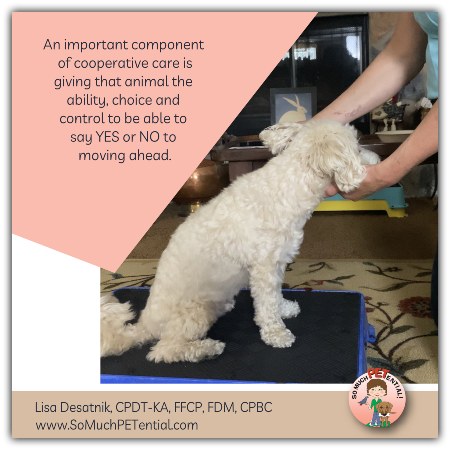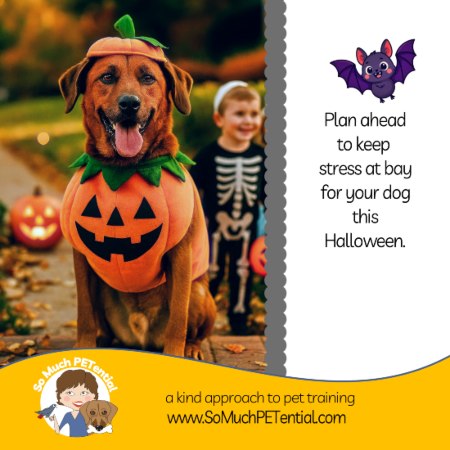Training for Fear Free cooperative care pet handling involves teaching an animal to be an active participant in handling and other husbandry behaviors. An important component of cooperative care is giving that animal the ability, choice and control to be able to say YES or NO to moving ahead. (This is referred to as agency.) This post will explain more with some examples of cooperative care training for dogs and pet birds.

There are so many benefits to teaching cooperative care.
Having that sense of control can go a long way toward making an unpleasant and unwanted activity more tolerable, and even possibly enjoyable. For the dog, bird or other animal, it can greatly reduce stress and create a positive conditioned emotional response (CER) instead. For the person doing the handling, it can make for a much safer handling.
Cooperative Care: this reluctant dog learned to opt in to putting on his collar
Prior to this training, this dog was showing a lot of stress when his walking collar came out. He yawned, looked away, blinked his eyes, and furrowed eyebrows. In this video, I show a targeting game. When he moved toward the collar, I sent him away for a treat. Sending him away was a double reinforcer- giving him distance and a yummy treat. He always had choice. He could choose to stay away or come closer.
You can see what he chose, and how his body language changed. Beautiful job Frankie!

Other Uses For Cooperative Care
There are so many options for teaching cooperative care to an animal and so many uses for it. Remember, there are many times in your life with your pet that you will need to do husbandry tasks with your pet.
Among the list of husbandry tasks:
grooming
checking your pets ears, eyes and mouth
nail trims
shots
paw handling
baths
getting into a car
getting onto a scale
getting into a carrier
Here is a video of me doing parrot crate training with my pionus bird, Dreyfuss.

Other Ways Of Teaching Cooperative Care
There are so many different ways of teaching your pet to give RED LIGHT and GREEN LIGHT in cooperative care. Whatever behavior you choose, that behavior should be taught in advance with a lot of reinforcement.
Some examples:
Teaching your pet a duration target behavior (like touching a nose or body part to something) and when your pet can hold that target, THAT is the green light.
Teaching your pet to lie on his/her side with head on the ground as the green light.
Teaching your pet to sit or stand in front of you with head held neutral as the green light.







